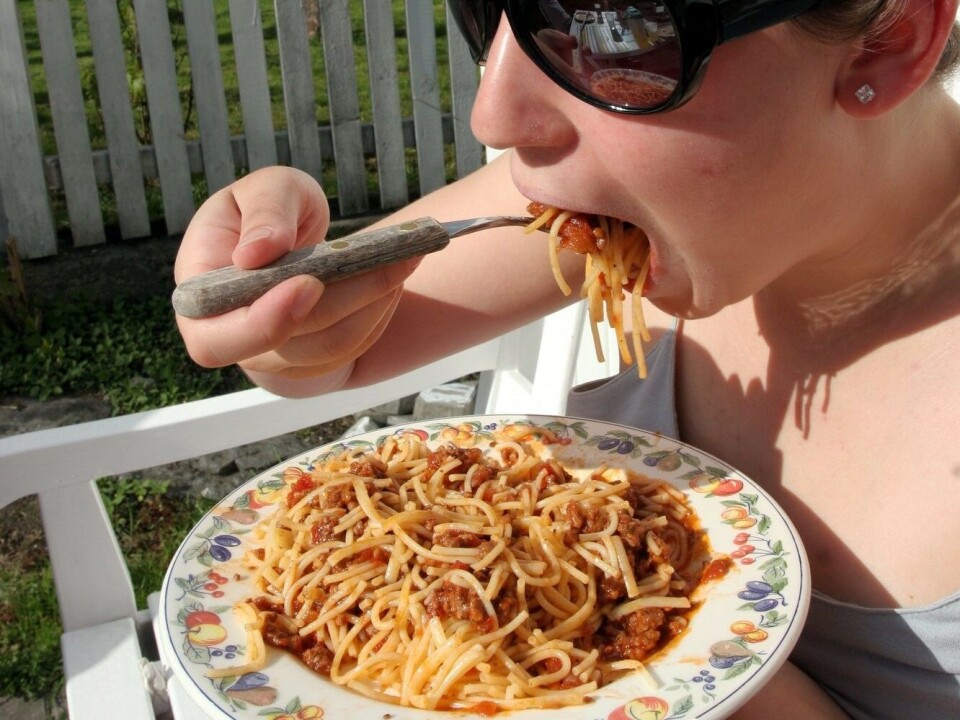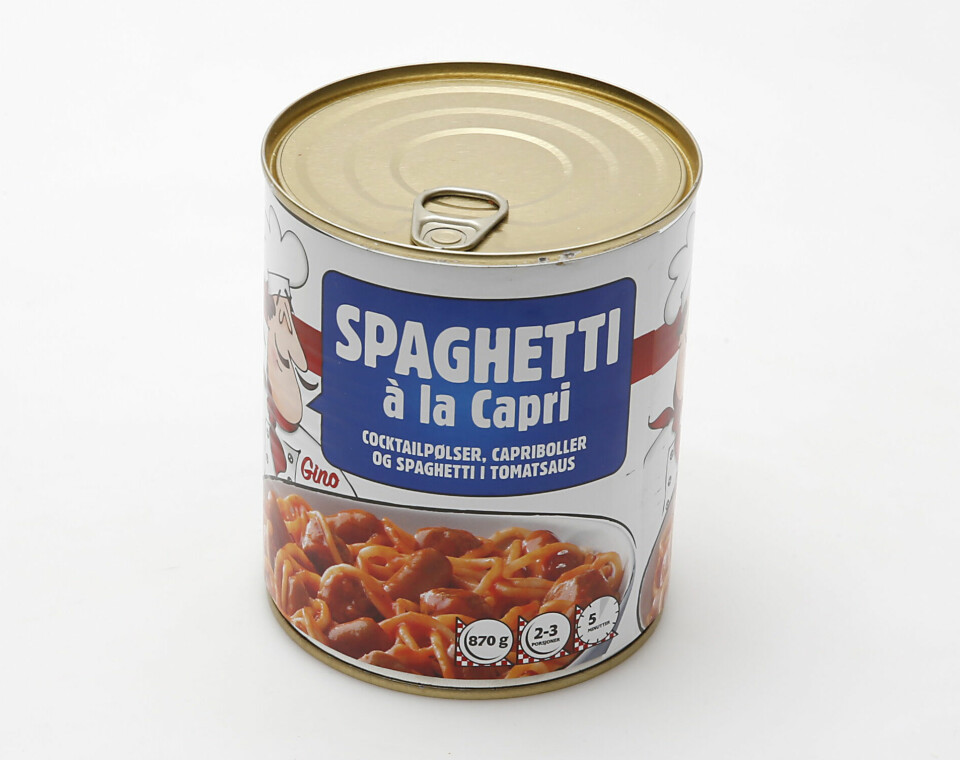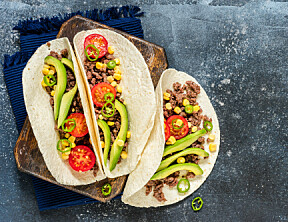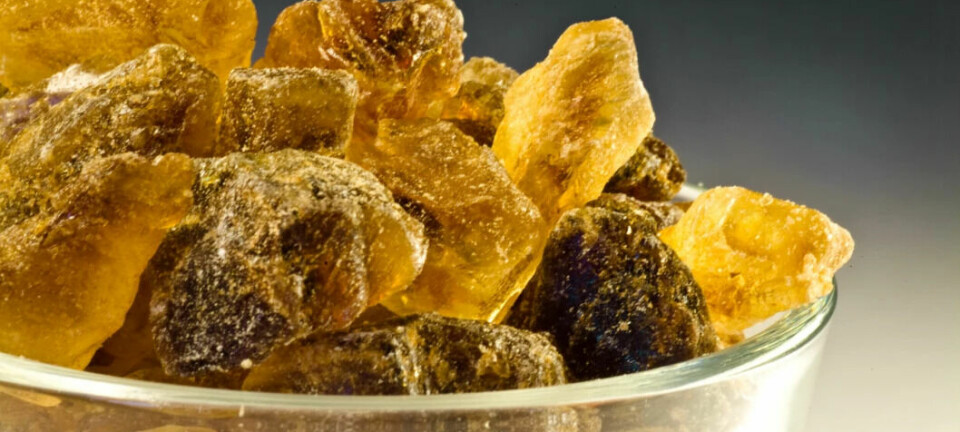
When pasta came to Norway: “We thought it was a vegetable”
Today, most Norwegians eat pasta dishes for dinner. But they do it the Norwegian way, which is quite far from the Italian way.
This year marks 110 years since the start of pasta production in Norway.
A new pasta factory in Oslo opened in 1913. They collaborated with the researcher Olav Johan Sopp.
Sopp was originally named Olsen, but changed his surname to his subject of research — namely mushrooms, which is sopp in Norwegian. He was a celebrity, and he lectured and wrote books about modern food and nutrition.
The macaroni factory used the name Sopps to brand its products. Today, Sopps pasta has a 40 per cent market share, according to the company’s own website.
But Sopps cannot claim credit for making macaroni a part of the Norwegian diet.
A Norway on the rise
Around 1830, macaroni appeared in cookbooks and newspapers.
At this time there was an upswing in the Norwegian economy. Shipping had its heyday. More and more fish and timber were sold abroad. New factories were constantly being built, first textile and metal, later other goods, according to norgeshistorie.no.
More exports led to more imports, particularly of foodstuffs.
More and more cookbooks were being published in Norway. And then macaroni appeared on the scene.
The cookbooks served as advertising for new foods and dishes, according to an article by Professor Ingunn Elvekrok at Kristiania University College.
Macaroni was eaten as a separate dish with sauce, or in fish gratin and meat pudding.
Meat, minced meat and macaroni
The dishes were simple with few ingredients.
Cookbook author Minna Wetlejen provided a recipe for meat pudding in 1890:
Cover the bottom and sides of a bread pan with forcemeat. Place layers of ham pieces and macaroni in the middle. Top with a layer of forcemeat. Roast in the oven for an hour-and-a-half and serve with brown sauce.
Macaroni pudding was also popular: Milk, macaroni and butter are boiled into a porridge. When the porridge is cold, mix in the eggs and sugar, and preferably a little nutmeg.
Sopps macaroni hit the shops in 1913. It took a long time before other types of pasta appeared.
Boiled potatoes with pasta
Spaghetti was the second to arrive, in the 1960s.
People didn't know how to use this type of pasta either. And the idea that this unknown food could replace the boiled potatoes was out of the question.
Ellen Horpen is 59 years old and from Steinberg in Drammen municipality. She tells a story from her childhood:
“We had potatoes, meat pudding in brown sauce and macaroni as our vegetable. I thought it was a vegetable until I was an adult. I've continued to eat it too, but not as often,” she said.
Gro is 55 years old and from the same place:
“We ate fish cakes in brown sauce with spaghetti and potatoes when I was little. With ketchup on it,” she said.
The Norwegian food history book Fattigmenn, tilslørte bondepiker og rike riddere (Fried crullers, apple brown betty and French toast) confirms that pasta was consumed like this.
The new vegetable
Macaroni went by the name ‘inland vegetable’, according to the food history book.
A nationwide survey on dinner habits was carried out in 1971. People were asked about the amounts and types of vegetables they ate. One of the options was macaroni and spaghetti.
Towards the end of the 1970s, the word pasta entered the language. Now people called dishes with spaghetti and macaroni pasta dishes.
Spaghetti with minced meat became a popular dish. Some served it with boiled potatoes.
Ready-to-eat casseroles in a bag were an innovation.
Fast powdered food
Many women got jobs, so they had less time to cook. It was quick and easy to pour a powdered mix and dried food into a pot and add water. One of these casseroles was Toro's Italian Spaghetti Casserole.
During the 1980s, pasta became increasingly common. A Norwegian cookbook from 1982 contains many recipes for pasta dishes. It also says that spaghetti and macaroni can replace boiled potatoes.
More varieties of pasta shapes are also appearing on grocery store shelves. There are tubes, corkscrews, ribbons and shells.
The media writes about pasta. It's cheap food. It satisfies. It’s modern and easy to make.
Pasta appears in salads. Lasagne becomes popular. Cookbooks now contain recipes for various pasta sauces.

The young eat the most pasta
Constant surveys are conducted for Norwegian marketing data about what people eat for dinner. By 1991, boiled potatoes had dropped to being served in just 20 per cent of meat-based dinners. Pasta – and rice – started to take over.
In the same year, 39 per cent of Norwegians ate spaghetti dishes for dinner a couple of times a month or more often, according to the food history book.
Young people led the way. Seventy-four per cent of young adults in Oslo ate pasta regularly.
Chinese, Indian and Mexican cuisines gained influence. But Italian cuisine was holding its own with an ever-greater breadth in the dishes people made.
Norwegians have not given up on the potato, however. In a study from 2008, seven out of ten said that they had eaten potatoes as a side dish to the main course in the last weekday and weekend. One in ten had eaten pasta.

Modern pasta
During the 2000s and up to today, food surveys show that pasta dishes are becoming more and more common on Norwegian dinner tables.
In 2017, spaghetti carbonara was the most popular recipe on the popular Norwegian food blogger Trine Sandberg's blog.
The restaurant Trattoria Popolare is located in Grünerløkka, a trendy area in east-central Oslo. The restaurant serves Italian dishes the Italian way, according to general manager Kristian Afzelius.
It’s a long way from the meat pudding of 1890 to the dishes Afzelius offers his customers.
Oxtail ravioli with spinach is the most popular dish.
Two tablespoons of sauce
The oxtail meat is fried and cooked with onions, garlic and chilli, Afzelius said. It is then combined with spinach and oregano and stuffed into raviolis. The meat stock is used in the sauce.
“Italians use much less sauce for their pasta than in Norway,” Afzelius said.
“Here we use a ladleful of sauce, while there they add two tablespoons of pasta sauce,” he said.
A traditional Italian dinner consists of several courses. The antipasti comes first and should whet the appetite. It includes some Italian bread, olives or ham. Then comes primi piatti, which is a pasta dish. The second main course - secondi piatti - consists of meat or fish with or without vegetables, Afzelius said.
Norwegians have adopted Italian dishes, but have dropped the Italian way of serving them.
Norwegians eat pasta as the sole main course with a lot of sauce on it, and have adapted the dishes to a Nordic taste.
Still mostly spaghetti
For example, Norwegians make pasta carbonara completely differently than in Italy. Norwegians use cream and whole eggs, throw in some bacon and preferably some peas. Finally, Jarlsberg cheese is grated over the top.
Trattoria Popolare is traditional. Their carbonara is made from cured pork jowl, sharp sheep's milk cheese, egg yolks and black pepper.
And spaghetti has held its own, despite all the new variants.
Kine Søyland, communications manager at NorgesGruppen, the largest wholesaler in the Norwegian retail grocery market, says classic spaghetti was the most sold pasta type last year. The cheapest variant is the most popular.
“We sold 611,000 kilos of the best seller First Price spaghetti,” he said.
“It’s interesting that even though the selection has become much wider and more varied, in terms of price, number of varieties and quality, classic spaghetti is still the variety that is sold and eaten the most,” Søyland said.
Translated by Nancy Bazilchuk
References:
Annechen Bahr Bugge: Fattigmenn, tilslørte bondepiker og rike riddere. (Fried crullers, apple brown betty and French toast. Food and eating habits in Norway from the 16th century to the present day). Cappelen Damm, 2019. (Summary in Norwegian)
Minna Wetlejen: Husholdningsbogen for unge husmødre i by og bygd, 1890. (Household book for young housewives in town and country), 1890.
———
Read the Norwegian version of this article at forskning.no
------






































